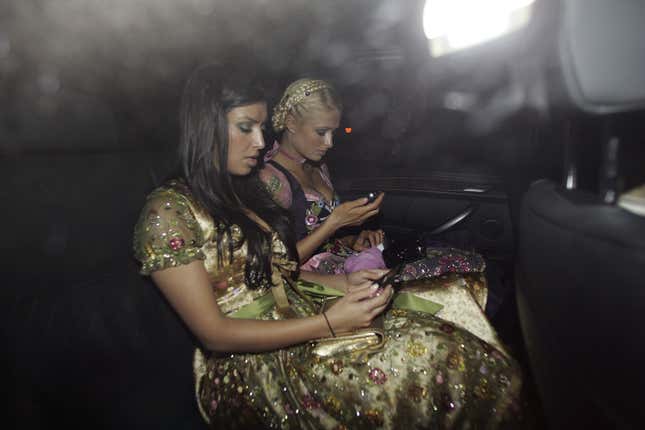The Rich Kids Are Fine
Celebrities
Image: Thomas Niedermuelle
In the wake of the documentary Framing Britney Spears, there was a brief flurry of performative public apologies to Spears from those claiming that, at the time, they did not understand that publicly mocking her breakdown and subsequent conservatorship was wrong. And the recent re-examination of the ways in which the media nearly broke and delighted in the breaking of Spears in the early aughts has had a ripple effect, spurring a spate of new conversation around what apologies might be owed other tabloid fixtures of the time, like Paris Hilton and Kim Kardashian.
“I was just shocked when I read [her apology] at first and pleasantly surprised…She was so genuine and so sweet and it really moved me,” Hilton declared on a March 5 podcast in light of Sarah Silverman’s apology for a 2007 joke she made about Hilton’s impending jail time, stemming from a parole violation following her 2006 DUI arrest. The bars of Hilton’s jail cell, Silverman joked, would be painted to “look like penises” in order to make the then-26-year-old feel more comfortable. Later that day, Kardashian issued her own thoughts on her treatment by the press in an Instagram story that contained two sentences about her newfound “empathy” for Spears followed by three long paragraphs congratulating herself for using her own mistreatment by the tabloids as motivation to “get me where I am today.”
But Hilton and Kardashian are foundationally nothing like Spears, a working-class child performer turned teenage pop star for whom the media acted as both a pump and a drain, simultaneously sexualizing her and then blaming her for that sexiness. For a melee of early-2000s California rich kids like Hilton and Kardashian, the press was a ladder to fame in the form of reality television, granting affluent 20-somethings rebellious notoriety simply for being rich and useless, personas they embraced wholeheartedly. Apologizing to those same rich kids two decades later is tantamount to apologizing for buying the product they were, at the time, selling.
An early Guardian profile of 19-year-old Hilton, who had just signed with Donald Trump’s modeling agency, takes place at Hilton’s home, the Waldorf Astoria hotel. “She’s such a bitch,” Hilton tells the interviewer of her 17-year-old sister Nicky, who pops in to retrieve a borrowed necklace. From there, she launches into stories about possibly cheating on her then-boyfriend Edward Furlong with Oscar de la Hoya while Furlong was in rehab and takes subtle jabs at the body sizes of models at recent shoots.
Much of the interview seems like a prototype not only for what would become the bratty public persona that would dominate the tabloids in the coming years but also for the Keeping Up With the Kardashians marketing machine: the sibling rivalry, “momager” Kathy Hilton yelling at Paris to get ready for a fashion show where they have front-row seats, the idea of attending a fashion show as “work.”
-

-

-

-

-

-

-

-

-

-

-

-

-

-

-

-

-

-

-

-

-

-

-

-

-

-

-

-

-

-

-

-

-

-

-

-

-

-

-

-








































